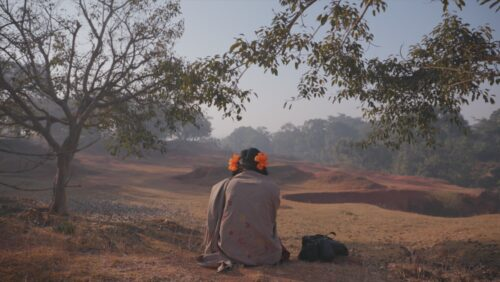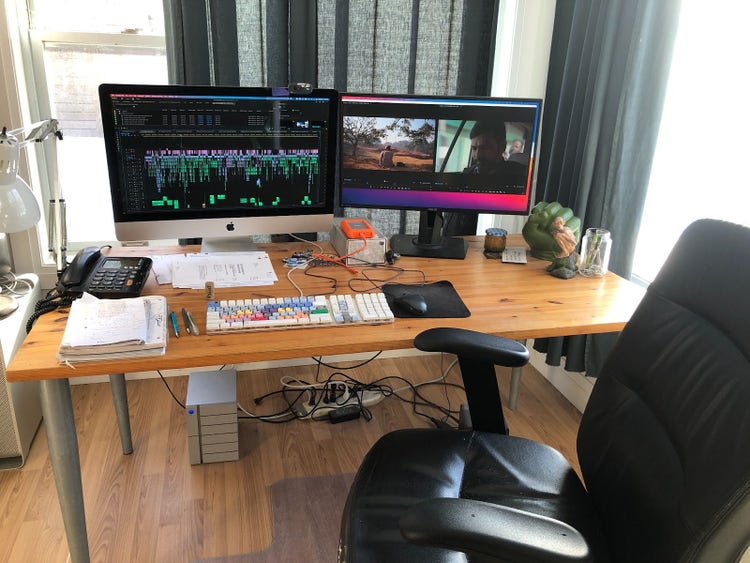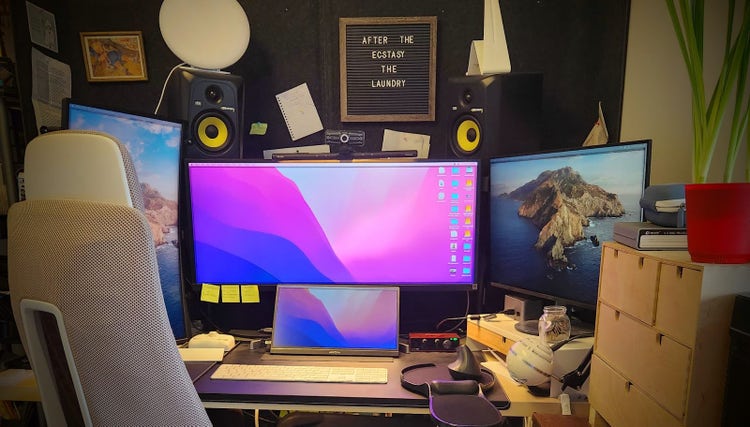“To Kill a Tiger” editors on bringing the Academy-Award nominated film to life with Premiere Pro

“To Kill a Tiger”, directed by Nisha Pahuja and produced by Dev Patel, Mindy Kaling and Rupi Kaur, is a powerful documentary that follows an Indian father’s search for justice after his daughter is sexually assaulted. Nominated for Best Documentary at the 2024 Academy Awards on March 10, the film takes an unflinching look at gender violence in India and one resilient family’s fight to have their day in court.
Notably, the film started as a different story before evolving into its final form, meaning the editors had to get scrappy to shift with the new storyline. Editor Mike Munn says the team had to set aside around two-thirds of the material they’d been editing, which is no easy feat. Adobe Premiere Pro helped them stay organized and on top of things — read on below as Munn and postproduction coordinator/assistant editor Pranay Nichani share insights into their workflow and collaboration, as well as tips for documentary editors (like staying tapped into new technology and utilizing tools like Text-Based Editing)!
How and where did you first learn to edit?
Munn: I actually started editing when I was about 14 years old. Whenever there was an English or History assignment in high school, I would ask if I could include a film component. I would shoot short films on Super 8 film and then edit on a viewer, splicing and glueing the pieces together. By the time I was in my final year of film school, I’d gravitated to editing as my niche within the filmmaking process, editing a number of final projects for my classmates.
Pranay: I began editing audio while creating mixtapes for friends, blending songs with a double cassette player. My first venture into video editing was crafting a film to impress a girl to ask her out. I started with Windows Movie Maker, dabbled in Sony Vegas, then honed my skills in FCP 7 during film school. Eventually, I taught myself Adobe Premiere Pro and Avid Media Composer.
How do you begin a project/set up your workspace?
Munn: After my assistant has set up the project and organized the footage, I will usually start by making selects from the shoot day sync map timelines. I will do this initial selection chronologically and once I’ve whittled the dailies down to a more manageable length, then I’ll start my assembly pass, forming the selects into scenes. These first versions of scenes will be configured on a timeline based on early story structure ideas. The overall structure, and the scenes themselves, evolve as we continually refine towards a rough cut.
Pranay: The initial step involves organizing the Camera Raw footage by shoot day on hard drives and creating proxies to mirror the structure. Once in Premiere, I utilize the multicamtimeline feature if the timecode is synchronized. Then, it's a matter of segmenting the footage into sequences for interviews, verite, and b-roll.
Tell us about a favorite scene or moment from this project and why it stands out to you
Munn: A scene that stands out to me is after the first day of the trial when Ranjit, his wife and their daughter are cooking a meal around the fire and talking about how long and arduous the legal process will be. There is also worry about the possibility of the accused men’s families threatening them with violence. The intimacy and rawness of this scene brings the audience fully into the family’s experience.
It’s beautifully and perfectly shot by the director of photography.
Pranay: It's challenging to pinpoint just one favourite scene, but emotionally, I cherish all the moments featuring Ranjit and his daughter. I really like the amusement park scene with its dreamlike quality. Technically, there were instances where I got to work on dialog editing, wherein I really had to play with the audio to make it work. For example, when Ranjit talks about him and his wife sleeping in shifts, we used Morph Cutin Premiere in some places: that has gone unnoticed (which is great!). Being a single camera verite film, that was a very useful tool.
What were some specific post-production challenges you faced that were unique to your project? How did you go about solving them?
Munn: The biggest challenge was that the director, Nisha Pahuja, had set out to make a different film than the one we ended up with. She had shot a film, epic in scope, about masculinity and the patriarchal system in India. Ranjit and the story of seeking justice for his daughter was a sub-story within the larger whole. After more than a year and a half of editing, we realized that Ranjit’s story was the only one we should be telling and thus set aside about two thirds of the material we’d been editing.
Pranay: The post for the film spanned over three years. There were multiple characters and storylines. The story that turned into “To Kill A Tiger” was just one of them. On the technical side, managing approximately 88TB of Raw (HD) footage across 156 shoot days presented a formidable challenge. We tackled this by dividing the footage into manageable 50-day projects and maintaining organization from the outset. I was lucky that the previous assistant editor Jordan Kawai (who later also did the music editing) had started off the project organized meticulously. Covid hit and we went remote. Using the proxy workflow, we had four copies of all the footage so the director, the two editors and I were able to simply email project files (with specific timelines) to each other. Another hurdle involved translating Hindi rushes into English subtitles. We were working with translators across the globe and facilitating Premiere workshops with them. That way they could use the title tool and work within Premiere, instead of the subtitles having to be written back in individually. Premiere’s intuitive workspace was an asset. I would export a low res mp4, bring that into a timeline, and create a template subtitle that they could copy and paste. Then I would send them a project file with the low-res export to link to. Once they returned the completed project file, it was easy enough to just drag and drop the text cards onto the parent timeline.
What Adobe tools did you use on this project and why did you originally choose them? Were there any other third party tools that helped enhance your workflow?
Munn: We used Premiere Pro to edit To Kill a Tiger. I find Premiere to be the most intuitive program for editing documentaries. I’m often dealing with multiple video tracks with many layers of still photos, video archive and B-roll and Premiere allows me to smoothly keep all those elements in play. Also, the ability to have multiple timelines open at once is invaluable. We didn’t use Frame.io on this project, but I’ve used it a number of times and I love its interactive nature for viewing and giving notes. It’s a great collaborative tool.
Pranay: We used Premiere for editing and organizing and Media Encoderfor exports. Before we had permission to use the daughter’s face/image, we experimented with After Effects to hide her face. There was a time when we were also trying to use Deep Fake technology. At one point, we needed to blur some faces, it was easy to do within Premiere with motion tracking. Apart from that, the Plural Eyes Plug-in came in handy on occasions where the timecode jammed, so I could try to waveform sync entire days instead of a clip at a time. I have a few different third-party extensions installed that I find helpful — Plural Eyes, Plume Pack, Simon Says and Watchtower. While Frame.io wasn't utilized for this project, I have integrated it into workflows and appreciate its seamless collaboration feature.
If you could share one tip about Premiere Pro, what would it be?
Munn: With any documentary project that has massive amounts of footage, I like to organize my interview, b-roll and archive selects into smaller, separate projects. This way they open and save quickly. Something I started using on “To Kill a Tiger” that was very successful is the Morph Cut effect. In a talking head interview scene, it’s great to have an alternative to jump cutting or changing the frame size. The Morph Cut allows you to condense a moment seamlessly.
Pranay: Utilize Premiere Pro on a robust system for optimal performance. Stay updated with the latest versions to leverage new tools like Text-Based Editing and the built-in transcript generator [Speech to Text], which can revolutionize your workflow.
Who is your creative inspiration and why?
Munn: I’m inspired by films where the editing creates a form and style that mirrors the psychological themes of the film. That is, as a viewer, you are brought inside the experience of the characters by the rhythms and pace of the edit. For me, some of the best examples are Thelma Schoonmaker with Goodfellas, Tom Cross with Whiplash and Graeme Clifford’s work with Nicolas Roeg on Don’t Look Now and The Man Who Fell To Earth.
Pranay: I get inspired by a lot of things; I don’t think I would like to limit myself to any one person. Working in non-fiction you get to be inspired by so many different stories and people, whether it's the filmmakers or the subjects themselves. “To Kill A Tiger” was extra special for me though. In 2013 I had watched the director’s previous film, The World Before Her on PBS while I was in film school in San Francisco. That film pushed and inspired me to work in non-fiction. Life brought me to Toronto and as luck would have it, I found myself working with her on this film. It was truly a dream come true. Bizarre how things play out.
What’s the toughest thing you’ve had to face in your career and how did you overcome it? What advice do you have for aspiring filmmakers or content creators?
Munn: The toughest thing I’ve had to face in my career goes back to the early days when I was starting out. It was balancing making a living as an assistant with looking for opportunities to edit and develop a body of work. The first couple of editing gigs I got were for very little money and though it was a struggle to exist financially for a period, these credits got my foot in the door. A piece of advice I would give to any aspiring film editor is to ally yourself with a beginning filmmaker who needs someone to edit their short film or first feature. If they don’t have much money, find a way to do it in the evenings or weekends after your day job. You’ll make new connections, and those early credits will lead to others and pretty soon the ball will be rolling.
Pranay: [In regards to] starting my career, three times stands out as one of the toughest challenges. I began in California after film school. After being a PA on multiple shoots and editing wedding videos for a bit, I got the opportunity to work as an AE on a non-fiction narrative with Oscar-shortlisted producer Marc Smolowitz, and renowned photographer Katy Grannan. My visa ran out and that year the H1-B work visa turned into a lottery system, so I had to pack my bags and restart life in Mumbai, India where I am from originally. I was PA-ing again and editing wedding videos, eventually making my way up to editing TV commercials and other films. In 2016 I moved to Toronto as a student, completed my education and got back on set as a PA, eventually making my way back up into editing and assistant editing. So I guess my biggest piece of advice would be to have patience and be persistent. We may not be able to see it, but setbacks can often be stepping stones to greater successes.
Share a photo of where you work. What’s your favorite thing about your workspace and why?
Munn: The favourite thing about my homework space is natural light. It’s in an insulated sunroom at the back of my house and has big picture windows. I can control the amount of light as needed (or not needed) with a series of curtains. When I’m editing in rooms dictated by the production, it’s not uncommon for them to have no windows. I thrive on having ambient natural light in the room.

Image source: Mike Munn.
Pranay: My workspace boasts ample screen real estate, facilitating efficiency in the postproduction process. Additionally, I appreciate the ergonomic benefits of my standing desk and vertical mouse, contributing to a comfortable and productive environment. Most importantly, it's located within the comfort of my home, fostering a sense of familiarity and tranquility amidst the creative chaos.

Image source: Pranay Nichani.